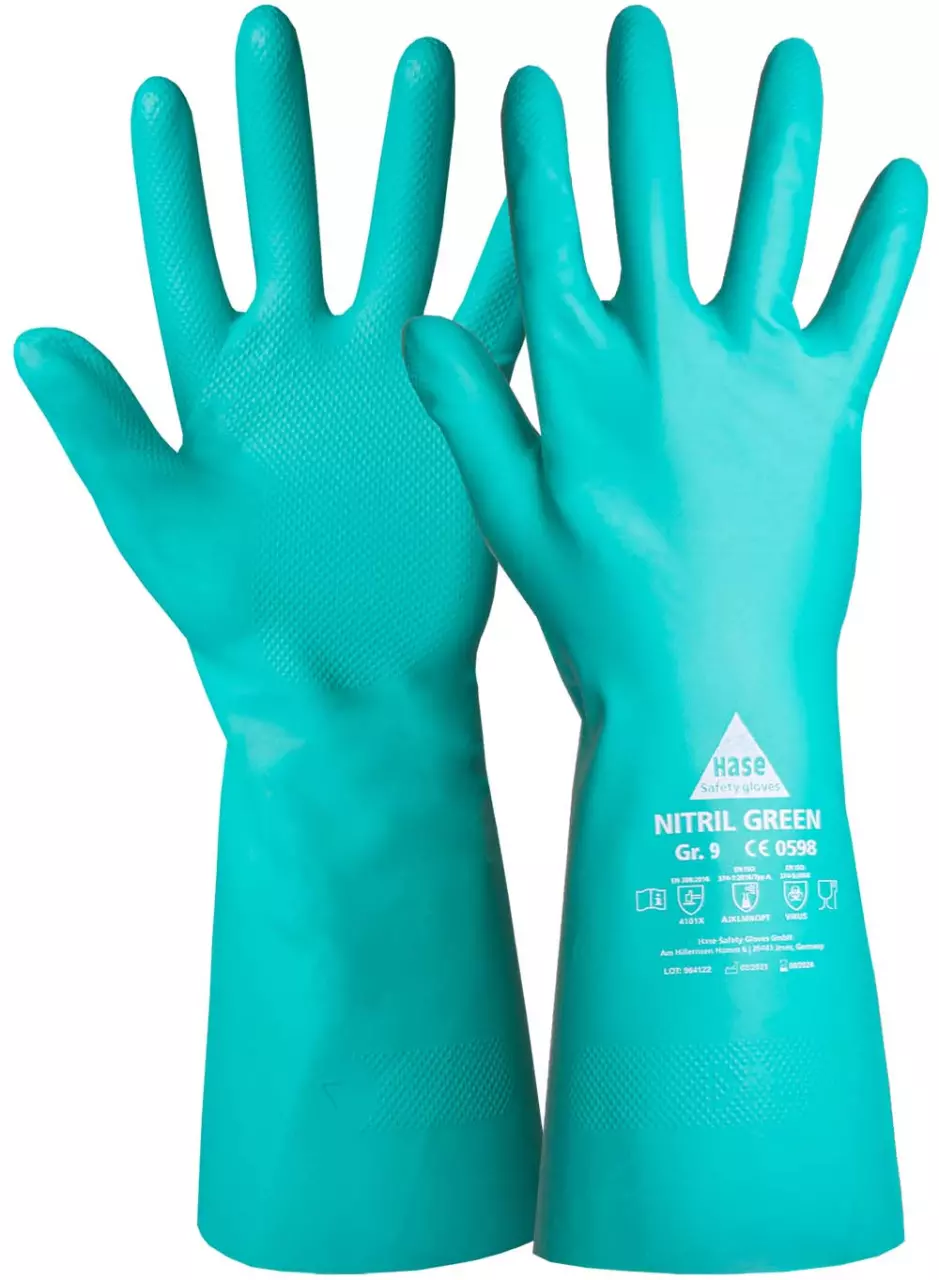Hase Safety Gloves NITRIL GREEN Chemical Gloves
5.0 / 5
Hase Safety Gloves logo
Hase Safety Gloves
visit storeProduct description
Type A chemical protection glove made of nitrile, cotton flocked backing, palm and fingers with diamond pattern for a better grip on dry, oily and wet parts, suitable for use with food, layer thickness: 0.38 mm, length: 32 - 38 cm. EN 388, EN 374
- Food Service
- Antimicrobial Protection
- Slip Resistant
- Water Resistance
- Chemical Resistance
- Hand Protection
Request a free sample
Test first and buy later. Visit any product page to request your free sample.
Standards and labels
Hase Safety Gloves delivery terms
Free delivery when you order more than 1 650,00 kr from Hase Safety Gloves
Supplier shipping fee 55,20 kr
Brand minimum 0,00 kr
Prices excl. VAT
17,58 kr
Estimated delivery: Sep 2-4th
Minimum: 10 pairsChoose quantity
7
8
9
10
11
Add 10 to reach minimum
Shipping fee is 55,20 kr for orders under 1 650,00 kr
Sold in units of one pair
View packaging details
Need larger quantities?
Other products you may like
Recently viewed
Other products you may like
Similar products you may like
Autonomous sourcing platform
The most efficient way to source and order supplies for your operations
Sourcing
Find all possible options within Europe in one place
Tap into the purchasing power of 1000s of customers
Set Price Alerts for your products and volumes
Ordering
Single process to order for your suppliers
Centralize orders to reduce admin work
Easily coordinate orders with your team



